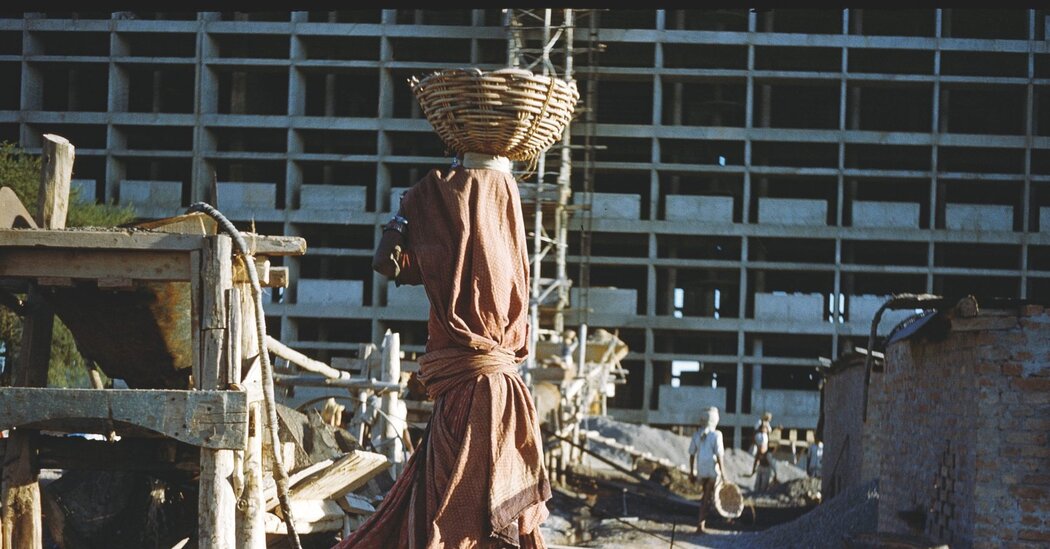
Rahul Mehrotra, the architect and Harvard professor, writes in the catalog about the challenge of housing. Faced with millions of refugees, the new nations of South Asia ended up proliferating developments that doubled down on centuries of class division. Islamabad was built for Pakistan’s military and bureaucratic elites. Refugees and the poor were settled in Korangi.
There were a few exceptions, like Anguri Bagh and also Correa’s Artists’ Village from the early 1980s, in Belapur, on the edge of Navi Mumbai, a new city that Correa also helped plan. As Mehrotra points out, Correa recognized an organic sort of intelligence in the evolution of Mumbai’s slums and other informal settlements: He took lessons from the creative ingenuity and optimism of people making homes for themselves, and urban spaces for shared communities, with few or no means.
Correa tried to codify these lessons at Artists’ Village, a settlement of free-standing, whitewashed houses with stone yards and pitched-tile roofs, organized around common areas: a lost-cost, low-rise, high-density, incremental development for a mix of different classes.
I gather that Artists’ Village by now has dissolved into the sprawling megalopolis of Navi Mumbai, a little worse for wear like all aging developments. But as Correa hoped, it’s still expanding on the urban DNA he planted, upholding his dream for a better India.
The same can’t be said about the Hall of Nations, alas. It was razed one night in April 2017, after officials on the heritage conservation committee for India’s current prime minister, Narendra Modi, turned a deaf ear to architects and historians around the world who pleaded to save the project. The hall wasn’t old enough to be protected, officials argued, and it needed to make way for glossy new development.
In the show’s catalog, Stierli calls the demolition “an act of vandalism” against a work of architecture that had symbolized a progressive vision of India now “fundamentally at odds with the Hindu nationalist stance of the present government.”




